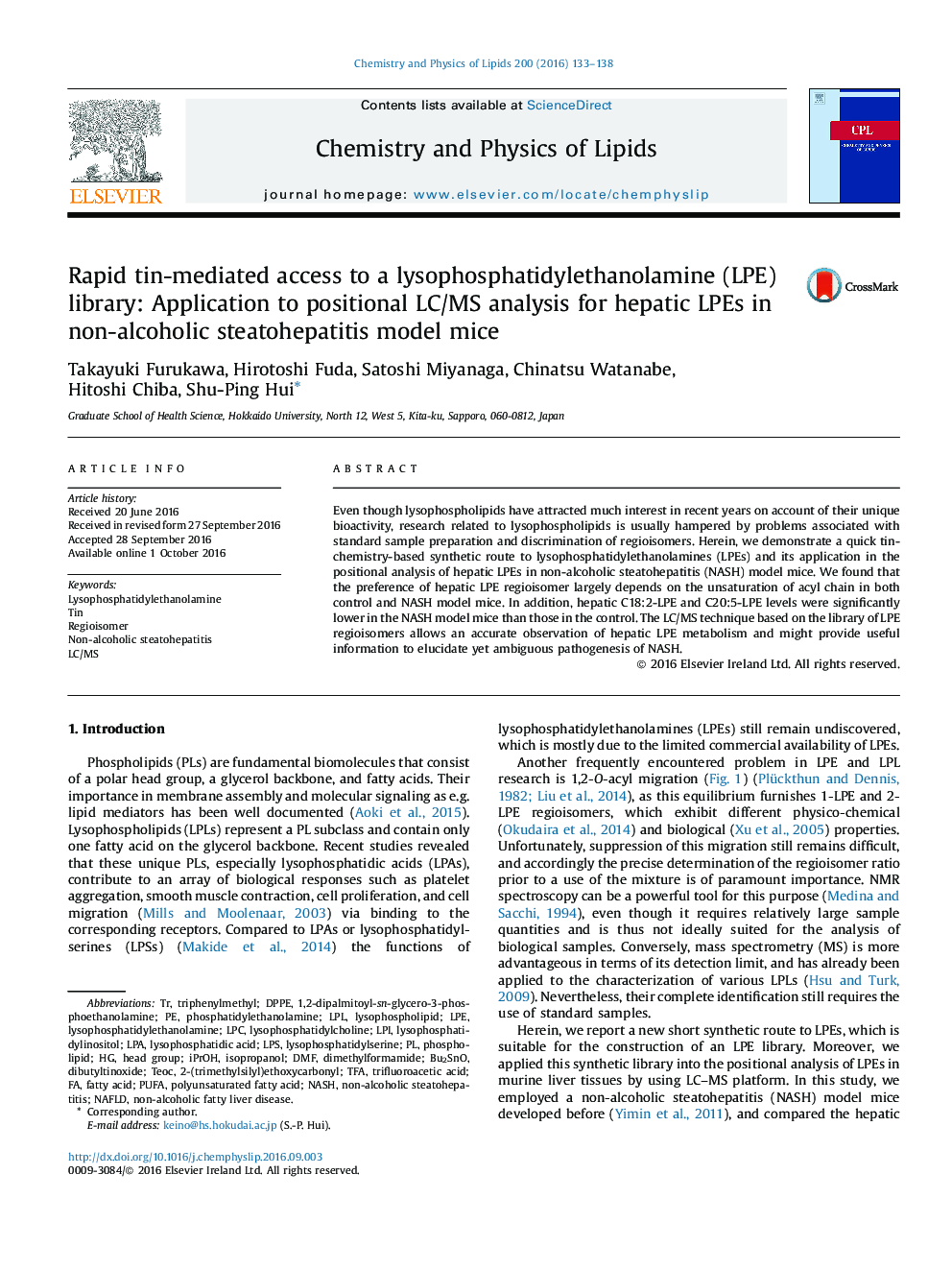| Article ID | Journal | Published Year | Pages | File Type |
|---|---|---|---|---|
| 7692264 | Chemistry and Physics of Lipids | 2016 | 6 Pages |
Abstract
Even though lysophospholipids have attracted much interest in recent years on account of their unique bioactivity, research related to lysophospholipids is usually hampered by problems associated with standard sample preparation and discrimination of regioisomers. Herein, we demonstrate a quick tin-chemistry-based synthetic route to lysophosphatidylethanolamines (LPEs) and its application in the positional analysis of hepatic LPEs in non-alcoholic steatohepatitis (NASH) model mice. We found that the preference of hepatic LPE regioisomer largely depends on the unsaturation of acyl chain in both control and NASH model mice. In addition, hepatic C18:2-LPE and C20:5-LPE levels were significantly lower in the NASH model mice than those in the control. The LC/MS technique based on the library of LPE regioisomers allows an accurate observation of hepatic LPE metabolism and might provide useful information to elucidate yet ambiguous pathogenesis of NASH.
Keywords
LPAiPrOHtriphenylmethylDPPELPLDMFlysophosphatidylethanolamineLPELPCLPILPS1,2-Dipalmitoyl-sn-glycero-3-phosphoethanolaminelysophosphatidic acidIsopropanoldimethylformamideHead groupphosphatidylethanolaminePhospholipidLysophosphatidylcholineLysophosphatidylserinelysophospholipidLysophosphatidylinositol
Related Topics
Physical Sciences and Engineering
Chemistry
Chemistry (General)
Authors
Takayuki Furukawa, Hirotoshi Fuda, Satoshi Miyanaga, Chinatsu Watanabe, Hitoshi Chiba, Shu-Ping Hui,
